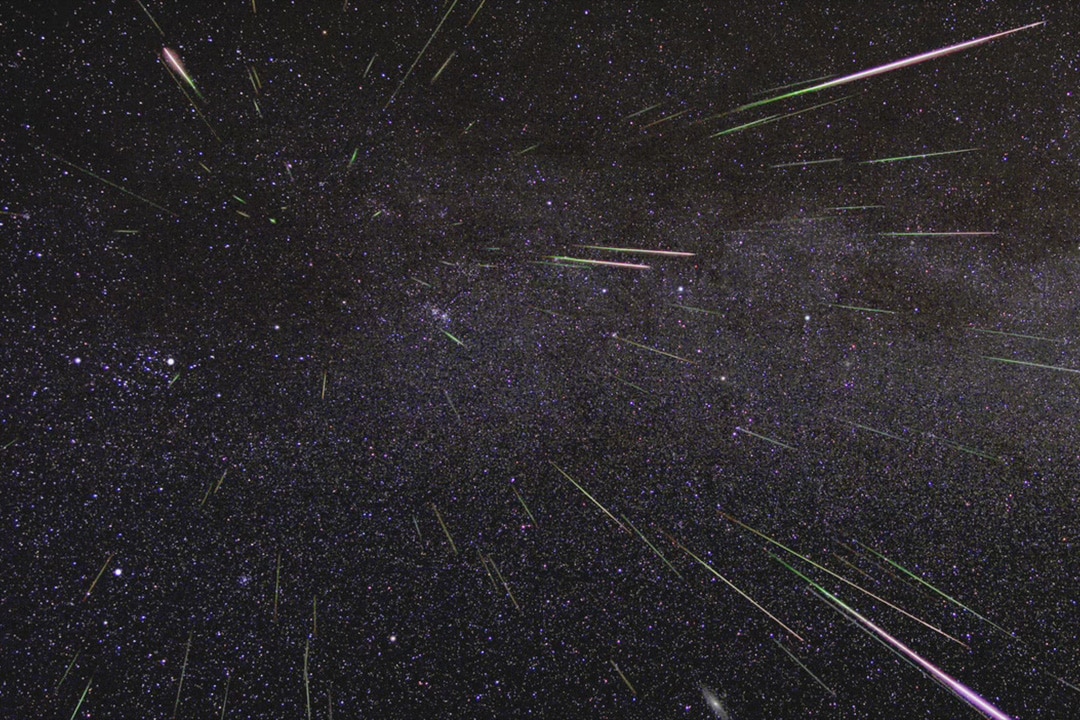Create a free profile to get unlimited access to exclusive videos, sweepstakes, and more!
Where and How to See the Alpha Centaurid Meteor Shower
You'll need clear skies, patience, and a spot in the Southern Hemisphere.

Skywatchers in the Southern Hemisphere have a chance to catch the lesser-known and little-celebrated Alpha centaurid meteor shower this week. Meteoroids, asteroids, and comets get a lot of flak on the big and small screen for what they might do. We make movies and shows – like the two-part miniseries Meteor, streaming on Peacock – about space rocks ending human civilization, but don’t spend enough time celebrating space rocks for what they actually do. What they do, of course, is paint the sky with shooting stars and mostly leave us alone otherwise.
Where Do Meteor Showers Come From?
From our perspective on the ground, it feels like meteors come racing in from deep space before they burn up in the atmosphere, but it’s actually the other way around. The meteors are mostly just minding their own business when the Earth comes smashing into them.
Most meteor showers get their start inside comets, orbiting slowly around the Sun. As the comet whips around the solar system, it drags a tail of material behind it. The comet keeps on moving but that material stays behind like a trail of breadcrumbs through space. Even when the nucleus of a comet is cruising out in deep space, its orbital racetrack of shed bits remains behind for us to encounter. Whenever the Earth passes through a part of its own orbit, which is intersected by a cometary debris trail, we get a meteor shower.
For More on Space Rocks:
Making Sense of Big Bertha, a Meteorite FROM Earth, Found on the Moon
AstroForge Space Mining Company Prepares for Launch to Secret Asteroid Target
Cometary Dust Smashed Tiny Craters into the Surface of Asteroid Ryugu
It’s less like someone throwing fruit at your car and more like driving through a swarm of insects. The angle of attack is different, but you still end up with stuff smeared across your windshield. Speaking of the angle of attack, meteor showers take their names from their apparent point of origin, known as the radiant point. The Alpha centaurid meteor shower is so named because it appears to radiate from a point in the constellation Centaurus.
How to See the Alpha Centaurid Meteor Shower
Usually, knowing the radiant point of a meteor shower isn’t all that important. It will tell you where most shooting stars are likely to show up, but most of the time all you really need to do is look up. In the case of the Alpha centaurids, the radiant point matters, because it never rises above the horizon in the Northern Hemisphere. Consequently, you can only reliably catch this particular meteor shower south of the equator. Assuming you’ve got a good southerly view, here’s what you can expect.
The Alpha centaurids are a minor shower, created by a smaller stream of material than other more famous showers. It begins at the end of January and carries through until February 21. In 2024, it will peak on the evening of February 8 - 9. Because the stream isn’t as robust as larger showers, only about six peaks per hour are produced even during the peak. That’s compared to more than 100 per hour during the Perseids, in August.
It’s not all bad news for fans of shooting stars. The peak of this year’s Alpha centaurids coincides with the New Moon. That means there will be minimal lunar light pollution. Provided you are at the right latitudes, and you have clear skies, the viewing conditions will be ideal.
Catch the ultimate meteor shower in Meteor, streaming now on Peacock.
















